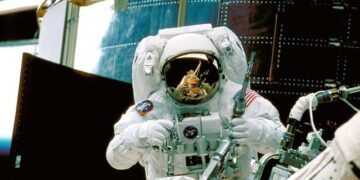Scientists have uncovered compelling evidence that kissing is far from a uniquely human behavior, tracing its origins back more than 20 million years. According to new research highlighted by ZME Science, this intimate act likely predates humanity itself, suggesting that our primate ancestors-and perhaps other species-engaged in kissing-like behaviors as a form of social bonding. The findings challenge long-standing assumptions about the evolution of affection and shed light on the deep-rooted biological significance of this universal gesture.
Origins of Kissing Trace Back Over 20 Million Years Revealing Ancient Evolutionary Roots
New research suggests that the practice of kissing extends far beyond our own species and stretches back over 20 million years, deeply embedded in the evolutionary history of mammals. Observations of various primates, including bonobos and chimpanzees, reveal behaviors strikingly similar to human kissing. These actions serve multiple social functions such as bonding, conflict resolution, and communication of affection or trust among group members. Such findings indicate that the roots of kissing likely emerged as a form of social glue, vital for survival in complex social structures.
Key evolutionary insights include:
- Early primates engaged in “mouth-to-mouth” interactions as a means of exchanging food and establishing social bonds.
- Evidence of affiliative behaviors related to mouth contact appears in fossil records and ethological studies.
- Similar gestures are observed in species across various continents, suggesting convergent evolution.
| Species | Behavior Description | Evolutionary Purpose | ||
|---|---|---|---|---|
| Bonobos | Gentle lip contact during greetings | Social bonding | ||
| Chimpanzees | Mouth-to-mouth food sharing | Building trust and alliance | ||
| Humans |
| Species |
Behavior Description |
Evolutionary Purpose |
|
| Bonobos | Gentle lip contact during greetings | Social bonding | ||
| Chimpanzees | Mouth-to-mouth food sharing | Building trust and alliance | ||
| Humans | Lip-to-lip kissing expressing affection | Emotional bonding, mate selection, and social connection |
Let me know if you’d like me to help with anything else related to this content!
Kissing Behavior Observed Across Multiple Species Suggests Complex Social Functions
Recent studies have uncovered that behaviors resembling human kissing are present in a remarkable array of species, ranging from birds to primates, spanning millions of years of evolution. These interactions are not mere displays of affection but appear to serve intricate social purposes such as bonding, conflict resolution, and even assessing genetic compatibility. For example, certain species of bonobos engage in mouth-to-mouth contact that strengthens social ties within their groups, while some birds use beak-to-beak touches in courtship rituals, suggesting that this behavior supports both emotional and reproductive functions across the animal kingdom.
Key observations across species include:
- Seahorses engage in prolonged snout-to-snout contact that aids pair bonding.
- Fruit bats perform ‘kissing’ behaviors to reinforce social hierarchies.
- Gibbons exhibit mouth contact during grooming, strengthening alliances.
- Certain species of fish utilize lip contact as a precursor to spawning.
| Species | Type of Contact | Social Function |
|---|---|---|
| Bonobos | Mouth-to-mouth | Bonding, Conflict resolution |
| Seahorses | Snout-to-snout | Pair bonding |
| Fruit Bats | Lip contact | Hierarchy establishment |
| Gibbons | Mouth contact during grooming | Alliance strengthening |
Experts Recommend Further Research to Understand Kissing’s Role in Communication and Bonding
While kissing has been observed across numerous species for over 20 million years, its deeper purpose remains a subject of scientific intrigue. Researchers emphasize the need to explore how this behavior influences communication beyond mere affection. Preliminary studies suggest that kissing could be a complex non-verbal language, allowing individuals to convey emotional states, establish trust, or negotiate social bonds. However, the mechanisms behind these interactions and whether they serve distinct functions in different species are still largely unknown.
Experts call for interdisciplinary approaches combining ethology, neuroscience, and psychology to decode the subtleties of kissing. Key research areas highlighted include:
- The role of sensory receptors in the brain during kissing
- Comparative analysis of kissing behaviors across various mammals and birds
- Impact of kissing on hormone regulation related to social bonding
- Long-term effects of kissing on pair bonding and group dynamics
| Research Focus | Potential Insight |
|---|---|
| Neurochemical response | Understanding oxytocin release patterns |
| Species comparison | Identifying evolutionary origins |
| Communication signals | Decoding social and emotional cues |
In Retrospect
As research continues to uncover the deep evolutionary roots of kissing, it becomes clear that this intimate behavior is far from uniquely human. The discovery that kissing-like actions date back over 20 million years and appear in other species challenges previous assumptions about the origins of social bonding and communication. These findings not only enrich our understanding of animal behavior but also offer new perspectives on the complex ways in which affection and connection have evolved across the animal kingdom. Future studies will no doubt delve deeper into the biological and cultural significance of kissing, shedding more light on one of the most familiar yet fascinating gestures shared by many species.































